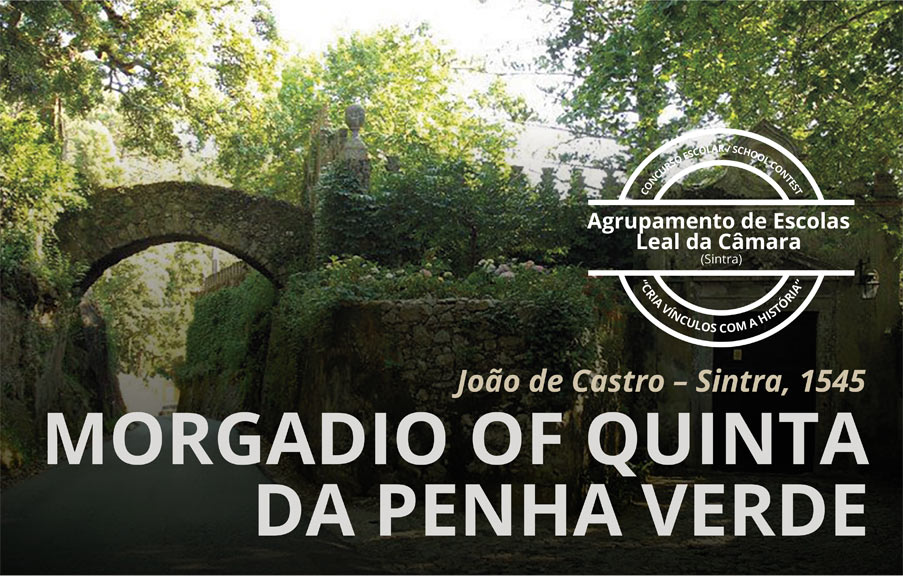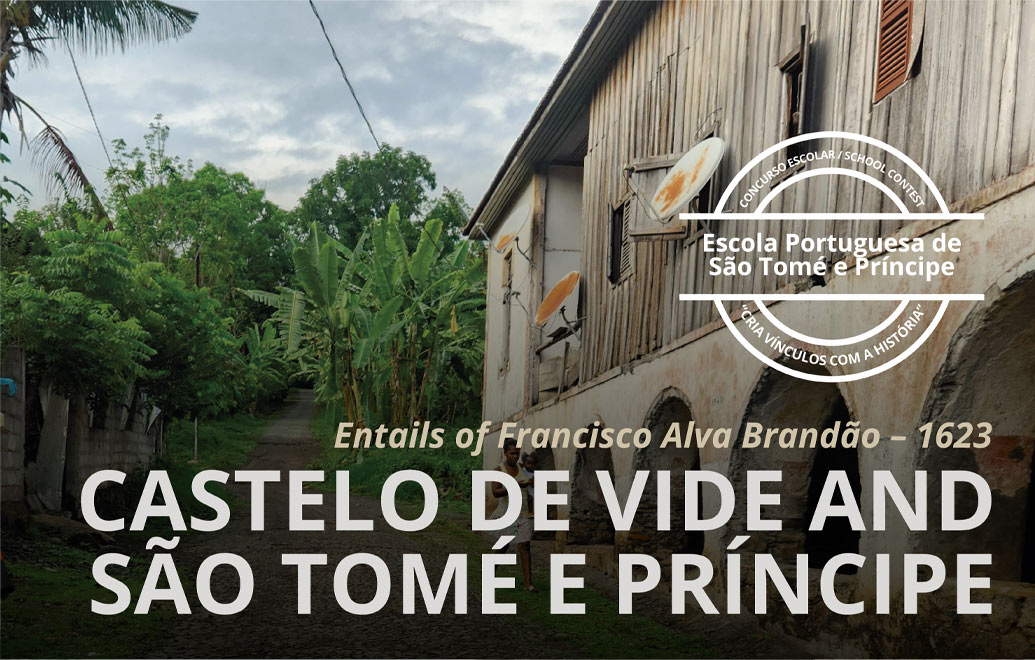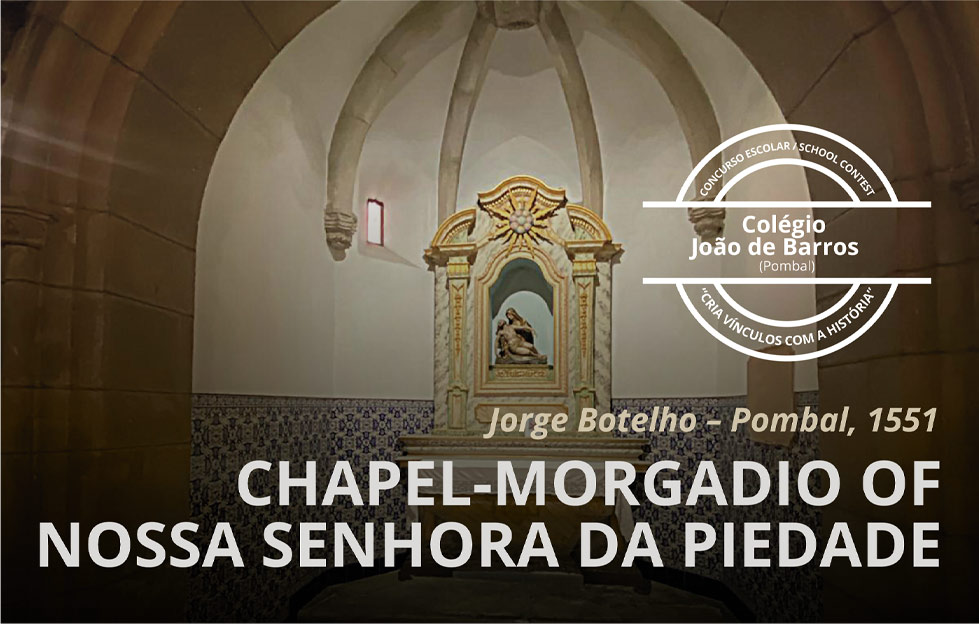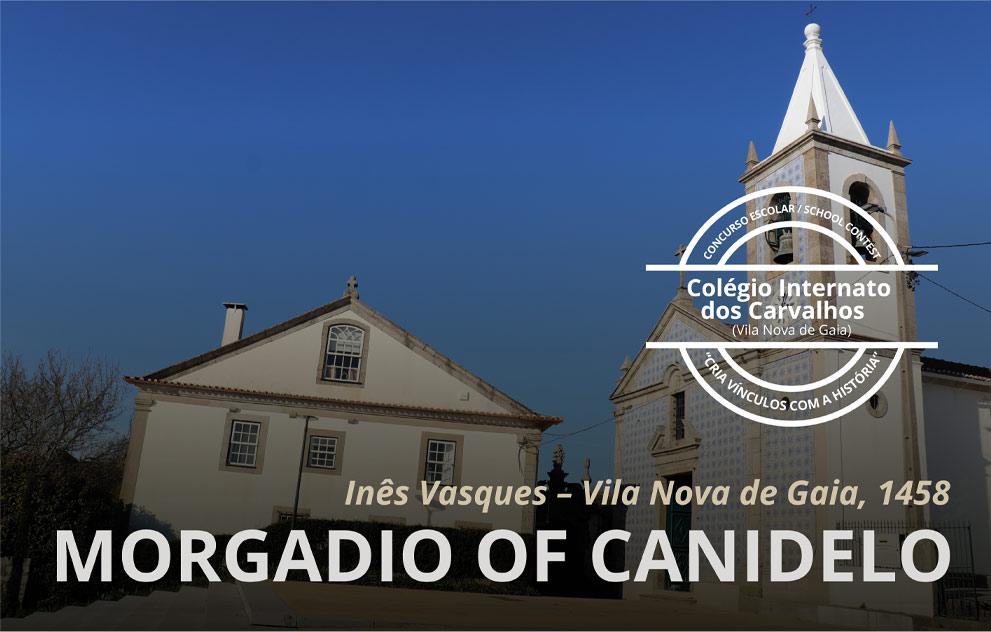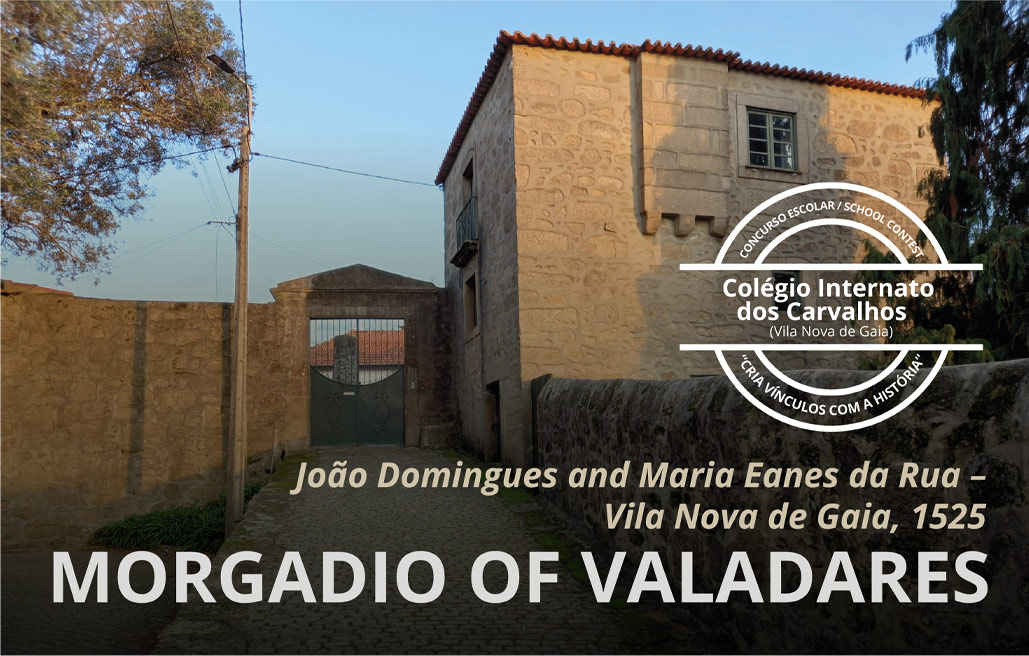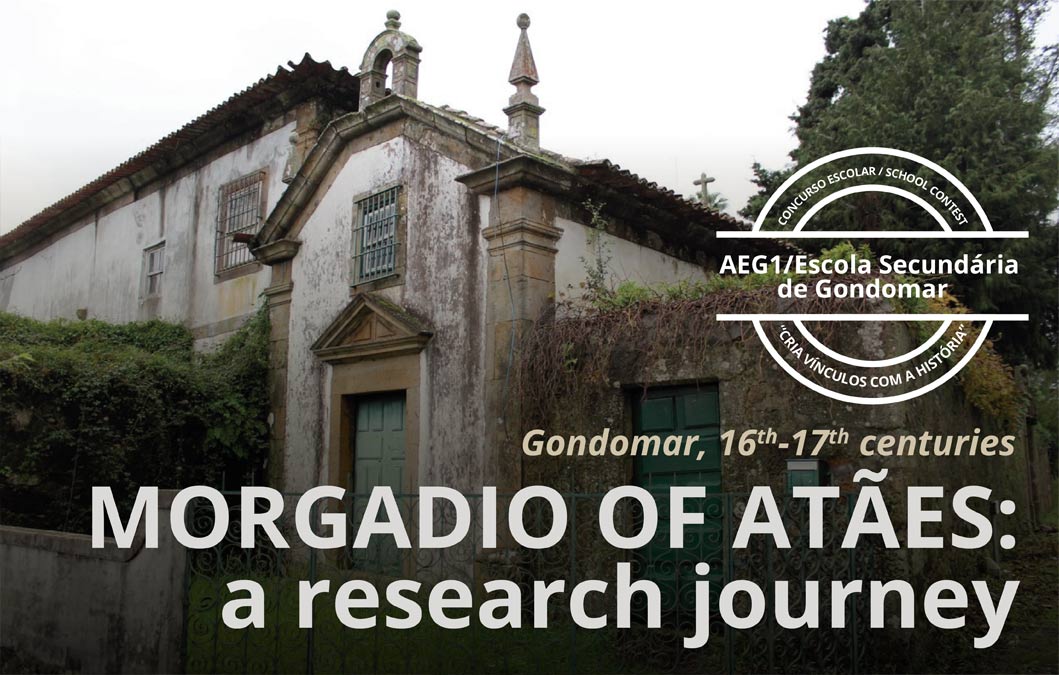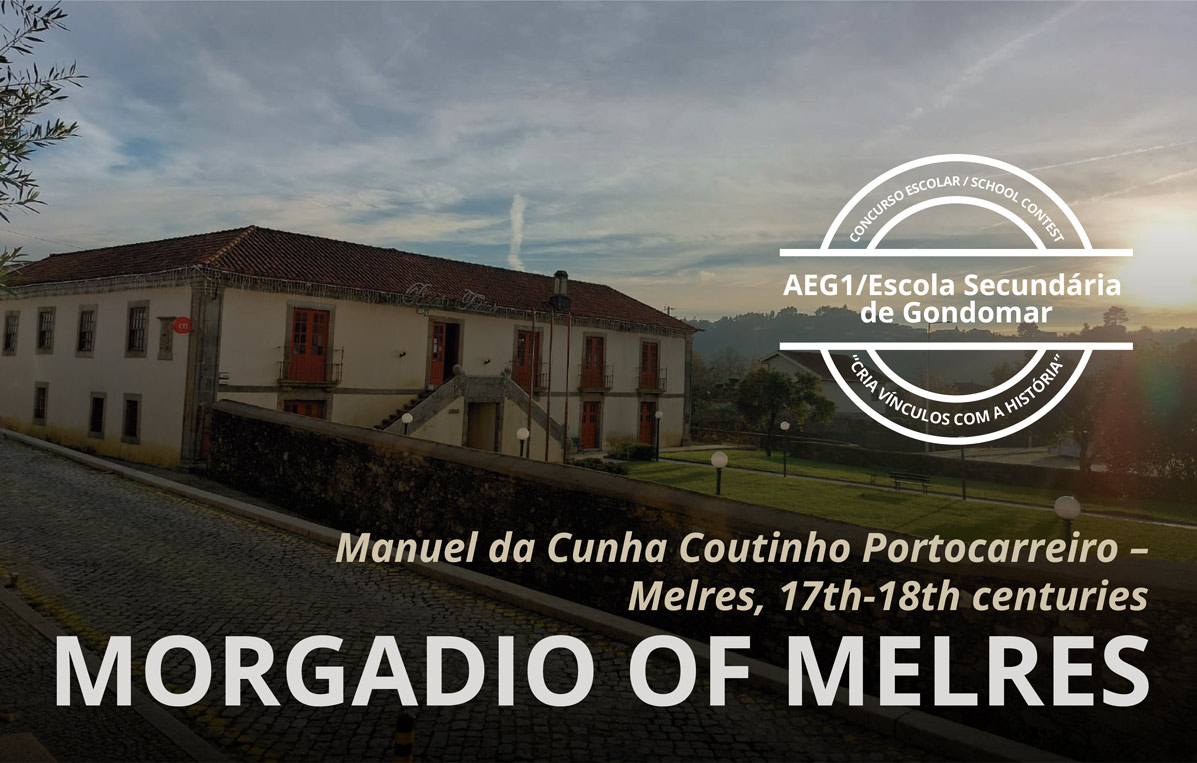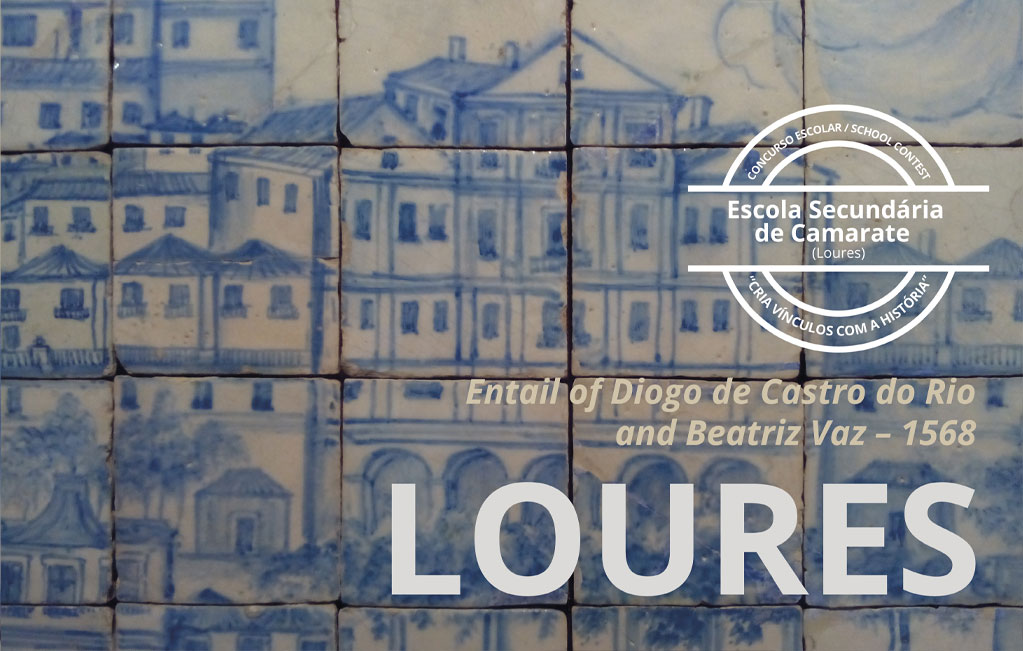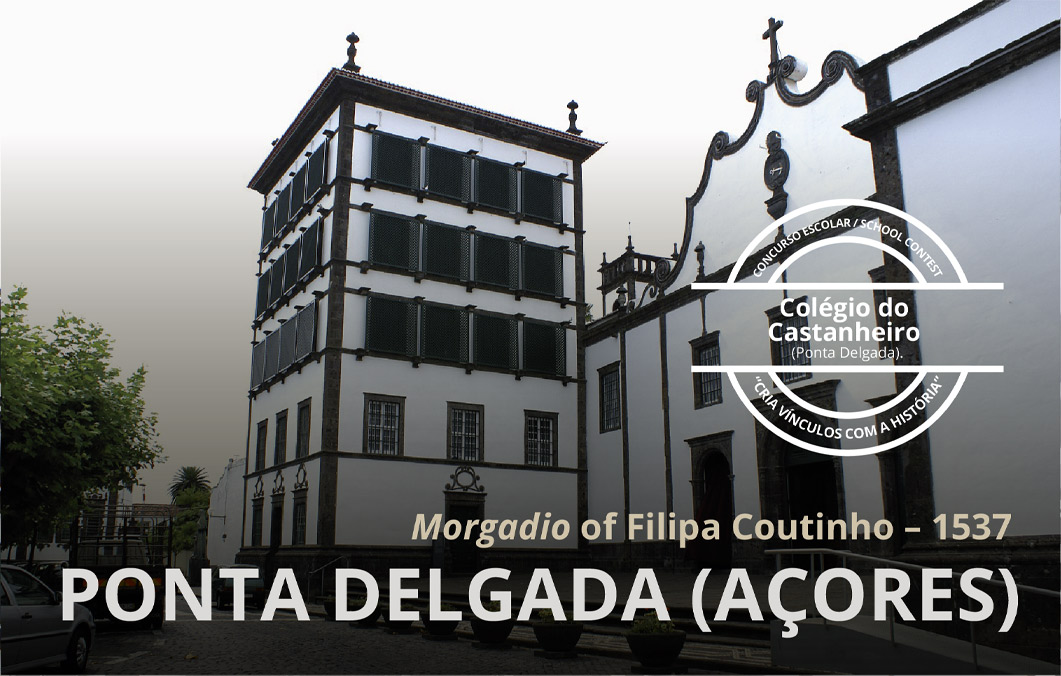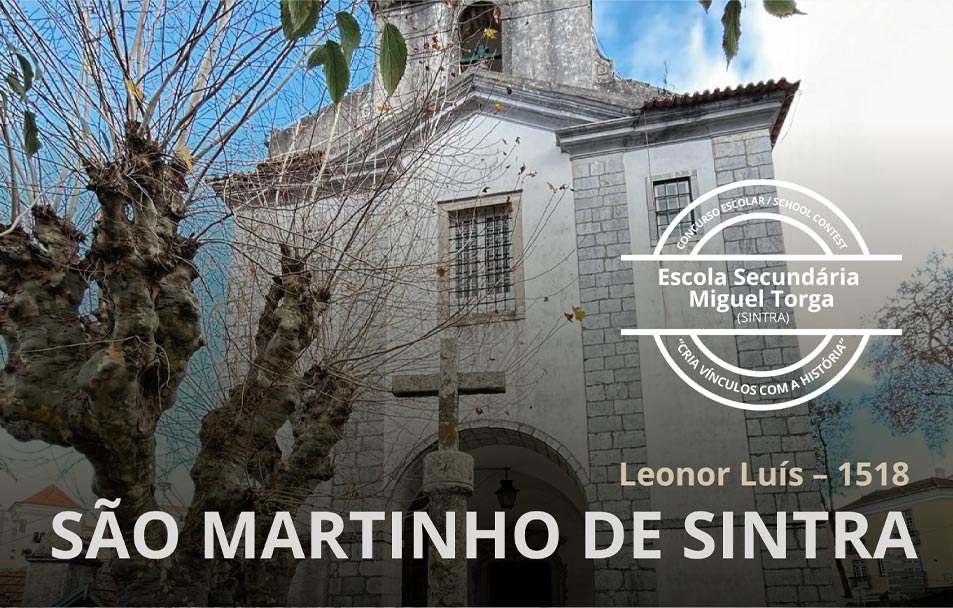Entail of the month (July, 2024)
Entail of Valadares
By João Domingues and Maria Eanes da Rua (1525)
The morgadio of Valadares dates back to the distant 16th century, to the family of the merchant João Domingues and Maria Eanes da Rua. Living in Porto, they were part of the lucrative mercantile group. They thus belonged to the city’s bourgeois elite, a considerable social status proven by the position that their first-born son, Francisco da Rua, would occupy, years later, as a Portuguese feitor in Flanders (LEITE, 1977).
As a way of establishing and consolidating their wealth and social position, João Domingues and Maria Eanes da Rua acquired several houses located on Rua da Fonte Taurina in Porto, the centre of their mercantile activity, as well as land properties in Gaia.
Before the institution of the morgadio, and in order to “prepare for death”, on 16 June 1523 the couple donated the income from four houses in Porto to the Convent of São Francisco, in the amount of 1.200 réis, with the intention of instituting perpetual masses for their souls (one a month, sung, “which will begin with the first days of July onwards, and this forever as long as the world is a world”) and reserving their burial place there, with the donors having the right to choose a person from their line to administer these goods. The convent’s acceptance of the alms obliged its members to hold the “said masses and anniversaries”, “without ever ceasing to say them” (ADP, Convento de São Francisco, Tomo quarto dos títulos das capelas e legados, K/20/6 – 96, folios 88v-90).
[Fig. 1] Tower of the Valadares manor house.
On 2 December 1525, the couple decided to make their will, which was drawn up by Rui de Couros, a public notary. They declare that they are doing so in the service of God and to unburden their consciences, and also to avoid conflicts between the couple’s heirs and those of Maria Eanes da Rua’s previous marriage (BRITO, 1997: 44-46). As such, they stipulated who would inherit which property and how the succession would take place.
Since there were forced heirs, the couple only disposed of the terça, (“third part”) using it to establish the entail. Thus, they incorporated into it a manor in Valadares, located in that village and in the parish of São Salvador de Valadares, in the judicature of Gaia; they also included the properties of Casal do Castanheiro, Casal do Réguo, a chapel in the church of São Salvador de Valadares and another chapel in the church of São Francisco, in Porto, stipulating that these estates would be entailed until the end of time.
The couple thus established the entail, appointing their son, Francisco da Rua, as first administrator. The conditions for passing on the entail after the death of the first heir were regulated, and in the absence of children, it would be administered by the eldest daughter. If there were no descendants, the properties would be in the hands of “the closest relatives of the said João Domingues and Maria Eanes”. As a last resort, the Casa da Misericórdia do Porto would become the administrator, safeguarding that none of the founders could alter the organisation of the assets, nor separate them, “nor alienate, nor give, nor donate, nor exchange, nor demarcate”, with the administrator having the duty to defend the entail against anyone who claimed them.
[Fig. 2] Valadares manor house.
The morgado of Valadares was obliged to support pious charges for the souls of the founders, and to this end the founders ordered a monthly mass in the Convent of São Francisco do Porto, “forever”, complementing the foundation they had made two years earlier. The masses were to be paid annually on St Michael’s Day (25 September), “thirty bushels of good wheat” (ADP, Convento de São Francisco, Tomo quarto dos títulos das capelas e legados, K/20/6 – 96, folios 39-44v). At the same time, and in keeping with the spirit of the epoch, their concern for the family, piety and the care of souls led them to establish a second chapel, dedicated to Saint Anthony, in the church of São Salvador de Valadares. They stipulated that every year, on St Anthony’s Day, three masses would be celebrated, one sung and two prayed.
Despite the extinction of the morgadios during the 19th century, the mark of this morgadio remains today in the landscape of Valadares. According to Francisco Queiroz, what is still known today as the Paço de Valadares corresponds to half of the Valadares “estate” mentioned in a document from the late 13th century. It is also suspected that in the 18th century it no longer served as a dwelling for the morgados, although João de Almada e Melo married there. Traces of the 16th century dwelling can be found in the house: “some architectural remains in the house, both in the tower and in the volume to the east of the tower, on the other side of the yard”.
[Fig. 3] Church of Saint Francis, Porto.
According to Francisco Queiroz, although the lord of this domain demanded that a part of the house always be reserved in case he spent the night there, there are no signs of the house having evolved in terms of housing, as it was not “baroque” and therefore did not have the necessary conditions to host the morgado, who was used to other types of comfort. In the 19th century, the administrator of the family’s estates was José Martiniano da Silva Vieira, a well-known “Miguelista” (from the political faction of Prince Miguel, traditionalist and anti-liberal). He remanded the farm to a residential use, after retiring from a life of writing, journalism and politics, to dedicate himself to agriculture. At the end of the same century, the estate was sold to a local wealthy farmer and is still in the possession of his descendants.
Note: We would like to thank Francisco Queiroz for access to his work and exclusive information that was important for the realisation of this research project.
This “Entail of the Month” was created as part of the “Cria Vínculos com a História” competition.
School: Colégio Internato dos Carvalhos (Vila Nova de Gaia).
Class: 11.º AJD.
Teacher: Anabela Vaz Pinto.
Students: Ana Rita Moreira, António Pinto, Sara Silva, Lara Mota, Carmen Almeida, Rita Ribeiro, Tiago Vital, Isabel Fonseca, Gonçalo Almeida, Rita Silva, Matilde Costa, Rafaela Valente, Lucas Alexandre, Diana Santos, Sara Fernandes, Célia Silva, Pedro Lopes, Catarina Mota, Beatriz Santos, Inês Afonso, Matilde Gonçalves, Guiomar Rocha, Ana Beatriz Monteiro, Valentina Gámez, Maria Almeida, Francisca Alves.
Coordination: Maria de Lurdes Rosa, Miguel Aguiar, Leonor Dias Garcia.
Sources and bibliography
Arquivo Distrital do Porto, Convento de São Francisco, Tomo quarto dos títulos das capelas e legados, K/20/6 – 96, fls. 39-44v, 88v-90.
BRITO, Pedro de – Patriciado Urbano Quinhentista: as famílias dominantes do Porto, 1500-1580. Porto: Câmara Municipal. Arquivo Histórico, 1997.
LEITE, António de Sousa, “Francisco da Rua, feitor de Portugal em Flandres”. Armas e Troféus. Lisboa: Instituto Português de Heráldica. III.ª série, tomo VI, n.º 2 (Maio-Agosto), 1977.
Other entails of the month



